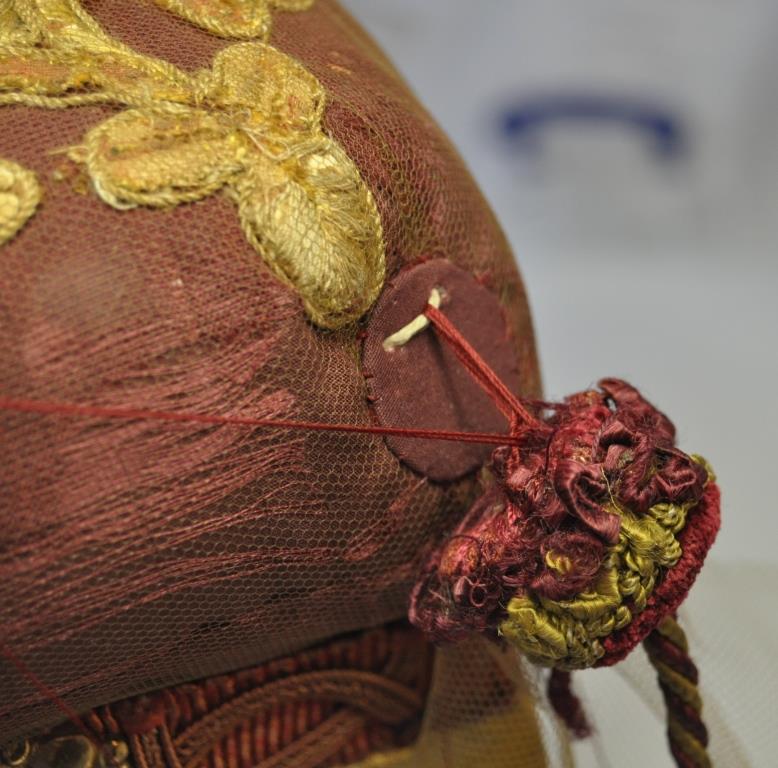Sovereign’s Throne and Footstool, designed by A.W.N. Pugin for the Palace of Westminster c 1847: conservation treatment for continued use and open display
Description
The Sovereign’s throne was constructed by John Webb in 1847 to the designs by A.W.N. Pugin. The silk embroidered red velvet seat and back upholstery are within a carved and gilded wooden frame inset with rock crystals.
Having ceremonial importance, the throne is a functional piece of seat furniture; during each State Opening of Parliament, it is used by the monarch to deliver a speech to the House of Lords in the Palace of Westminster.
Over the past 170-year period, the upholstery under-structure materials of the throne and the footstool have been repaired or replaced with new, to enable continued use and open display in the Lords Chamber. Although now quite worn, and re-mounted onto new silk velvet at some point in the past, the original embroidered panels have survived.
Client brief/Role of object
Stabilise the upholstery elements to enable continued long-term open display of the Throne and Footstool, and occasional use of the Throne.
Condition before treatment
Previous work, aimed to stabilise the upholstery under-structure of the throne seat and footstool, remained effective. However, the velvet top cover and embroidery were very fragile. The silk velvet pile had worn away along the seat front and the velvet covering the footstool had split and completely disintegrated in areas, exposing the upholstery under-structure.
Treatment
The embroidered panel was temporarily removed from the throne seat for conservation treatment. Treatment involved the removal old repairs which were causing damage to the original elements, followed by mounting onto a fine support fabric. All detached embroidery fragments, including the exposed card under layers, were stabilised using a combination of stitching and adhesive techniques. A protective layer of fine, custom-dyed, conservation-grade net, was stitched over the panel. The stitching increased the effectiveness of the support by drawing the net in contact with the contoured surface of the embroidery. New silk velvet was upholstered over the historic velvet cover, using conservation techniques designed to minimise damage to the seat frame and surviving upholstery. The conserved embroidered panel was stitched to the new cover.
The embroidered footstool cover was also very fragile. The heavy tassels and old repair net were removed. Support patches of custom-dyed cotton were inserted behind the worn velvet, and loose elements were secured using conservation stitching techniques. Further support was provided by a custom-dyed, colour-matched protective overlay of conservation-grade nylon net.
A conservation support system was devised that would divert the weight of the tassels from the weakened upholstery, and prevent the tassels from trailing on the floor. This was achieved by placing a red fabric-covered Nomex® disc at each corner of the footstool; the discs were anchored with unbleached flax twine, through the upholstery, to the base of the footstool; each tassel was stitched to the twine and disc.
Condition after treatment
The seat unit and footstool have responded well to treatment. Removal of the coarse net has exposed the fine details of the surviving elements of the original embroidery. The embroidered sections are well supported by the net layers. The new seat velvet protects the previous velvet cover and provides a stable ground for the conserved embroidery, and when the seat is in use. The tassels are well supported and are no longer subjecting the footstool upholstery to undue stress and strain.
Further information
Acknowledgements
Reproduced courtesy of the House of Lords, Palace of Westminster, Kate Gill Textile and Upholstery Conservation Services © 2017.










